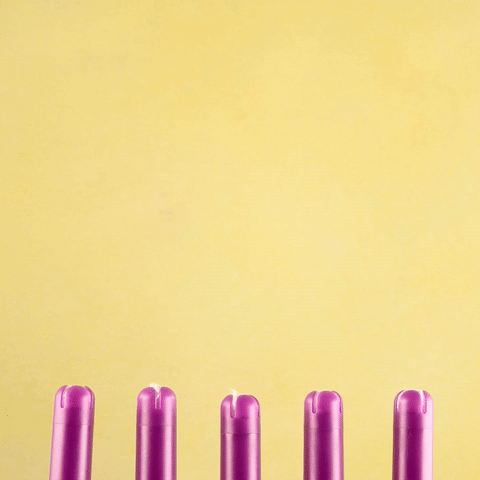Ah, the unexpected visit from Aunt Flo and the mad dash to find anything to hold that flow, until you can run to the shops and grab some sanitary towels/tampons/cups. We’ve all been there and it’s the worst. But imagine if there was no sanitary aisle in the corner shop; no clean and set way to manage your period. Well, that was pretty much the case for all of history!
But just as those of us with a monthly visit from “the decorators” today have had to MacGyver a loo roll towel when in a pinch, our ancestors across the centuries also had to invent ways to manage their periods. So let’s immerse ourselves in the ingenious and only slightly traumatic past of period management:
1. Rags: Yep, the term “on the rag” actually does refer to using rags for sanitary management.
 Yeah, it’s not one we should bring back.
Yeah, it’s not one we should bring back.
This one dates all the way back to the medieval period (sorry, I’ll use “era” for the rest of this article) and lasted for centuries. Essentially, people would ball up rags of whatever they had on hand and placed them between their legs to manage their flow.
Now obviously, the richer you were, the better quality rags! So if you’re a well-to-do girl about town, then you get some lovely linen. But if you’re a peasant, I’m afraid you’re getting some itchy offcuts that you have to rewash every month—nice.
2. Suspension management: I bet you were thinking that those rags were stuffed in a set of knickers, right? Nope! Broadly speaking, from the medieval era right up to the Victorian era, women didn’t wear knickers (or similar) because underwear was very much a male thing (click here for the full history of women’s underwear).
So if you don’t have underpants holding those rags in place, you best think of a plan B fast; without them, things are gonna get real bloody real quick, after all:
 Basically!
Basically!
There’s a lot of evidence that women wore girdle-like contraptions to keep their rags in place. Queen Elizabeth I actually owned a snazzy set of black silk girdles specifically for use during her periods; the girl was not getting any period stains.
But much like with the quality of rags, how rich a woman was massively affected the quality of her rag-holding device. So a woman might have to make her own belted girdle-type thing at home, or if she was in a really tight budget, go full Blue Peter and make something from twine, scraps of fabric and whatever else was lying around.
3. Bog moss: Yeah. You read that right. BOG. MOSS

Now, this is more of widespread theory than one with concrete evidence, but there’s a lot to back it up. Plus, you know, it’s fully horrifying, so I’m totally including it!
Sphagnum is a type of moss that grows in cold damp places (so most of the UK). And for the last 1,000 years, this little beauty has saved countless lives thanks to its ability to absorb liquid more than 20 times its size!
Commonly used on battlefields, sphagnum was used to pack up wounds and stop people bleeding to death. So it would make a lot of sense that people would have also utilized the incredibly easy to get your hands on plant that was renowned for soaking up blood…even if it mainly did come from bogs, hey, needs must right?
 So, if you’re ever in the countryside and in a pinch…you know what to do.
So, if you’re ever in the countryside and in a pinch…you know what to do.
4. Wool sanitary towels: By the 1880s, sanitary towels had started to appear. As always, they were only something for the well-off, but it was a huge step forwards when it came to people actually being able to comfortably manage their periods.
 This advert for an early towel appeared in Harper’s Bazaar in 1887
This advert for an early towel appeared in Harper’s Bazaar in 1887
There was one big downside: Many of these early towels were stuffed with wool.
 Another early sanitary advert from the 1880s
Another early sanitary advert from the 1880s
Ok, here’s the thing. Cotton is absorbent. Wool is not. It doesn’t matter how many times an advert labels wool as absorbent, it’s still not good at actually absorbing the liquid. Imagine your most wooly jumper when it’s sopping wet. Now imagine that between your legs. Yeah. No. All the nos to that! Luckily, a change was coming.
5. Bandages: During the First World War, nurses did not have time to faff about with their periods. They quickly worked out that the new disposable bandages they were using on wounds were also a fantastic tool to help manage their flow.
This—helped along by the invention of Cellucotton (a sort of cotton made from wood pulp)—caught on, and with materials now more widely available, the nurse’s invention went mainstream. In the 1920s, Kotex launched its disposable sanitary towels, citing the battlefield nurses as their inspiration. And so launched a boom in period inventions!
 Truly one of the best invention revolutions in history!
Truly one of the best invention revolutions in history!
This post originally appeared on F Yeah History and is reprinted here with permission.
Top photo by Prashant Gautam via Pexels
More From BUST
How Ida Lupino Went From “Blonde Bimbo” To Groundbreaking Director
The World’s First Movie Star Also Invented The Brake Light
“Breach Of Promise” Lawsuits Helped Jilted Women Get Justice

